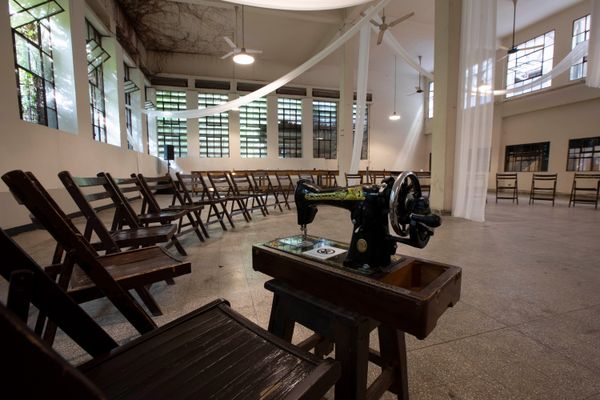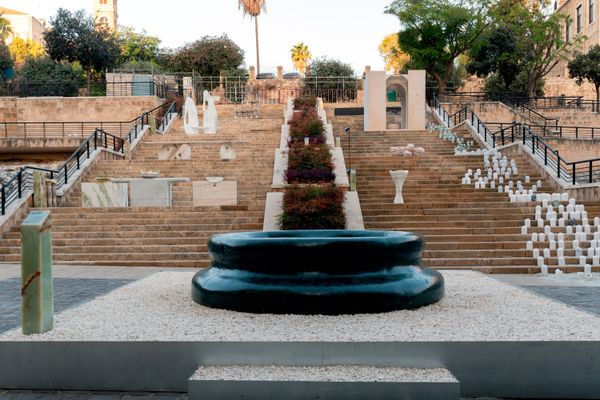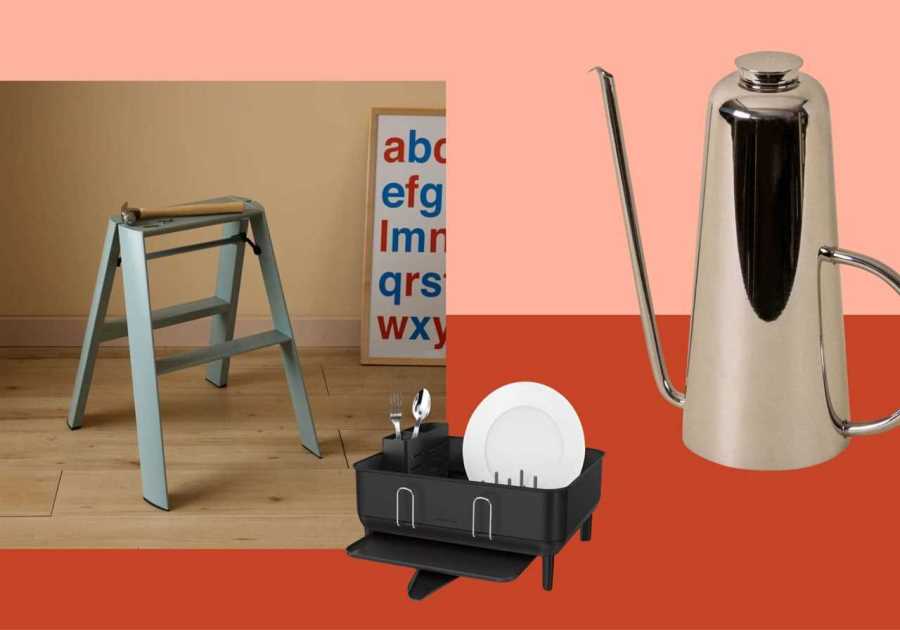We Design Beirut showed off the country’s glamour and grit in the face of drones and air strikes.
This story is part of Fair Take, our reporting on global design events that looks up close at the newest ideas in fixtures, furnishings, and more.
I did not want to go to Beirut. I was tired from working on a book all summer, and I wanted to stay home and rest, not fly halfway around the world to go to a weeklong design fair that was putting me up in the Lebanese capital. Design press junkets can be the kind of thing where some PR person whisks you off to a very expensive building, and then you look at the building and nod and say, yes, this is a very nice building, and then they serve you a very expensive lunch, and you nod and say, yes, this, too, is very nice, and then you go home having learned what, exactly, you don’t know.
For a moment, I considered backing out of the trip, blaming it on the State Department’s Level Four travel warning: "Do Not Travel to Lebanon due to crime, terrorism, civil unrest, kidnapping, unexploded landmines, and the risk of armed conflict." Yes, sir! The news stories we see in the West about the country depict it almost exclusively as a place of explosions and war. That could be enough to stop many from going. But, thankfully, I try not to let the U.S. government direct my decisions, and the design fair, called We Design Beirut, was not only unlike any junket I’ve been on, it showed me how deeply American media and institutions have failed to understand the region and its design intelligence, to our loss.
One of the clichés about Lebanon is that it’s a land of contrasts—you can ski in the morning and lounge on a beach in the afternoon; you can be shopping at Hermès when the city’s power flickers out, as it often does—and this actually rang true on the trip. The fair’s organizers shuttled press and VIPs around a packed schedule of events, and the tonal contrasts among the designs on display here were sometimes dizzying. Half the fair was a very chic version of Absolutely Fabulous. When I was surprised to see someone in the VIP group going off to dinner at 10:45 p.m., he responded with a shrug: "It’s Beirut." The other half was absolutely serious. One exhibition featured a group of Palestinian women living as refugees in Lebanon who wove traditional thobes, or dresses, representing the towns and cities they had left behind. Another installation dramatized the chaos of the 2020 port explosion. Party through the pain was a sort of through line.
"We are an insane people," Samer Al Ameen, one of the fair’s organizers, told a crowd over the weekend to laughs. "Too resilient."
The fair, which was open to the public and occupied spaces throughout the city, was on its second edition and is the work of Al Ameen, a designer, and Mariana Wehbe, a PR maven. It kicked off in an abandoned factory filled for the week with traditional artisans and contemporary designers reworking historical techniques like wood inlaying and glass blowing. In one of the rooms, the fashion designer Salim Azzam organized a performance with the seamstresses who make his clothes and the singer Lynn Adib. The artisans, like Azzam, are Druze, one of Lebanon’s many religious groups and one that has often had a tough go of it in the region. They sat in a ring and performed stylized movements of thread cutting and embroidering while Adib walked in the middle and sang among them.

The setting for Salim Azzam’s performance featuring the artisans who create his clothing.
Photo by Bernard Khalil
Sometimes performances at design fairs can be a bit abstract and befuddling in an experimental theater kind of way, but this one was surprisingly moving. Adib’s voice threaded throughout the space, punctuated by the motions of the seated women and an electronic soundtrack, creating a kind of haunting Bolero. Not having made any friends yet on the trip who could distract me, I watched the performance twice and was only more moved the second time. The singing was both mournful and beautiful; the connection to traditional crafts clear. Even though I was still jet-lagged and didn’t understand the language or the explicit intent behind the performance, I got locked into the solemn but celebratory tone. My recalcitrance to the trip was dealt a death blow, and I sensed that this wouldn’t be the usual PR jaunt.

A Nation in Stitches installation from the nonprofit Inaash, featuring traditional thobes created by Palestinian women living in Lebanon.
Photo by Bernard Khalil
Then we spent the afternoon at the ruins of the Roman Baths downtown, where designers had installed creations all made of marble, including a giant bathtub that at a later event would be filled with dry ice smoke and would have bathing dancers frolic around it. It’s Beirut! And the next morning was a cold plunge back into living history at Burj El Murr, a ghostly tower in the city that had been left abandoned for years. At one time the tallest building in Lebanon, snipers used it as a base during the country’s Civil War, which lasted from 1975 to 1990, and militants interrogated victims in its basement. We Design Beirut was opening it to the public for the first time with a display of student work titled Design in Conflict.

We Design Beirut installation the Roman Baths in downtown Beirut.
Photo by Walid Rashid
See the full story on Dwell.com: Architectural Optimism Is Alive and Well in Lebanon
Related stories:
- Mexican Design Is Ready for Its Close-Up
- Poufs Made of Pizza Boxes Weren’t the Strangest Things We Saw at Collectible NYC
- Elegant Ashtrays, Updated USM Chairs, and New Piercings at the "Shelter" Design Fair
Read More
By: Jack Balderrama Morley
Title: Architectural Optimism Is Alive and Well in Lebanon
Sourced From: www.dwell.com/article/we-design-beirut-2025-lebanon-2300b854
Published Date: Mon, 10 Nov 2025 22:25:10 GMT
Did you miss our previous article...
https://trendinginbusiness.business/real-estate/housing-inventory-falls-as-demand-picks-up
.png)





